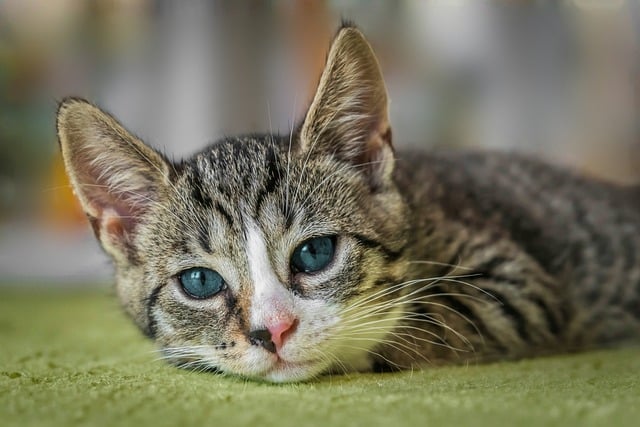Welcome to our comprehensive guide on jaundice in cats and dogs! Jaundice, also known as icterus, is a condition characterized by the yellowing of the skin, mucous membranes, and sclera of the eyes due to elevated levels of bilirubin in the bloodstream. While it’s more commonly associated with humans, jaundice can also affect our beloved pets, cats, and dogs. In this article, we’ll delve into the causes, symptoms, treatment options, and prevention measures for jaundice in cats and dogs, ensuring you’re equipped with the knowledge to keep your furry friends healthy and happy.
Understanding Jaundice in Cats
It can be a concerning condition for pet owners. Here’s everything you need to know about it:
Causes
- Liver Diseases: Hepatic lipidosis (fatty liver disease), liver cancer, and hepatitis can all lead to jaundice.
- Infections: Viral, bacterial, and parasitic infections can cause liver inflammation, resulting in jaundice.
- Toxins: Ingestion of certain medications, chemicals, or toxic plants can damage the liver and cause jaundice.
- Hemolytic Anemia: Conditions that cause the destruction of red blood cells can lead to an increase in bilirubin levels, causing jaundice.
Symptoms
- Yellowing of the skin, gums, and whites of the eyes
- Lethargy and weakness
- Loss of appetite
- Weight loss
- Vomiting and diarrhea
- Increased thirst and urination
Diagnosing
- Physical examination
- Blood tests to measure bilirubin levels and assess liver function
- Imaging studies such as ultrasound or X-rays to evaluate the liver and surrounding organs
Treatment
- Addressing the underlying cause: Treatment may vary depending on the specific cause of jaundice, ranging from medications to surgery.
- Supportive care: IV fluids, nutritional support, and medications for cats to manage symptoms and support liver function may be necessary.
- Hospitalization: Severe cases of jaundice may require hospitalization for intensive treatment and monitoring.
Survival Rate of Jaundice in Cats
- The prognosis for jaundice depends on the underlying cause, the severity of the condition, and how quickly treatment is initiated.
- With prompt diagnosis and appropriate treatment, many cats can recover from jaundice and go on to lead healthy lives.
Prevention
- Ensure your cat has a balanced diet and maintains a healthy weight to reduce the risk of hepatic lipidosis.
- Keep toxic substances out of reach, including medications, chemicals, and plants known to be harmful to cats.
- Schedule regular veterinary check-ups to detect any underlying health issues early.
Cost of Treating
- The cost of treating jaundice can vary depending on factors such as the underlying cause, the severity of the condition, and the chosen treatment options.
- Diagnostic tests, medications, hospitalization, and follow-up care should all be taken into account when budgeting for treatment.
Home Treatment for Jaundice in Cats
- While some supportive care can be provided at home, it’s essential to consult with a veterinarian for guidance on home treatment.
- Ensure your cat has access to fresh water and a comfortable environment to rest and recuperate.
Cats Eyes and Ears
- Jaundice can affect the sclera of the eyes and the mucous membranes of the ears, causing them to appear yellow along with the skin and gums.
Is Jaundice in Cats Contagious?
- Jaundice itself is not contagious, but certain underlying conditions that cause jaundice may be infectious.
Treatment of Jaundice in Dogs
- Treating the underlying cause: Treatment may include medications, dietary changes, or surgery, depending on the specific diagnosis.
- Supportive care: Fluid therapy, nutritional support, and medications to manage symptoms may be necessary to support liver function and overall health.
- Monitoring: Regular follow-up appointments and monitoring of liver function are essential to evaluate response to treatment and adjust management as needed.
Jaundice in cats and dogs can be a concerning condition for pet owners, but with prompt diagnosis, appropriate treatment, and preventive measures, many pets can recover and go on to lead healthy lives. By understanding the causes, symptoms, treatment options, and prevention strategies outlined in this article, you’ll be better equipped to recognize and address jaundice in your furry friends, ensuring they receive the care and support they need to thrive. Remember, always consult with a veterinarian for personalized advice and guidance tailored to your pet’s specific needs.
FAQS
What causes jaundice in cats and dogs?
Jaundice in cats and dogs is typically caused by liver disease, bile duct obstruction, or hemolytic anemia. Infections, toxins, and certain medications can also lead to jaundice.
How is jaundice diagnosed in cats and dogs?
Diagnosis involves a combination of physical examination, blood tests, urine tests, and imaging studies such as ultrasound or X-rays to identify the underlying cause of jaundice.
Can jaundice in pets be prevented?
Preventive measures include regular veterinary check-ups, a balanced diet, and avoiding exposure to toxins. Early detection and treatment of liver disease or other underlying conditions can also help prevent jaundice.



